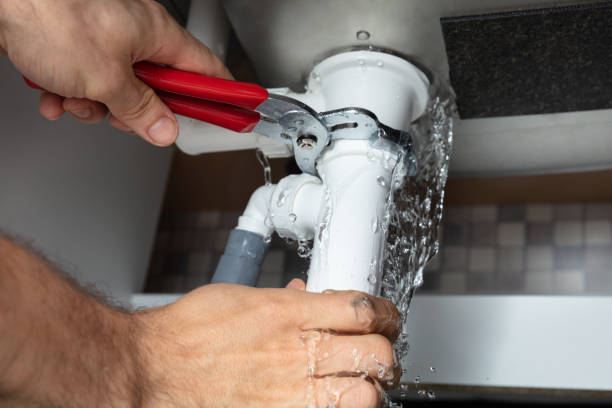Water damage is one of the most common and destructive issues homeowners face. It can start with a slow leak or happen suddenly, but either way, the aftermath can be costly and stressful. From damaged flooring and drywall to potential mold growth and structural issues, even minor water problems can quickly spiral out of control.
Understanding the leading causes of water damage is the first step in preventing it. Whether it’s faulty plumbing, aging fixtures, or unnoticed wear and tear, many of these problems can be avoided with regular maintenance and early intervention. In this article, professionals who offer same-day plumbing near you will break down the top culprits behind residential water damage and what homeowners can do to stay one step ahead.
1. Leaky or Burst Pipes
One of the most frequent sources of water damage is a leaking or burst pipe. Over time, pipes can corrode, joints can loosen, or pressure changes can cause cracks. Even a small drip hidden behind a wall can lead to mold, rot, and extensive structural damage.
How to prevent it:
Regularly inspect exposed pipes under sinks, in crawl spaces, or in basements. Watch for signs like rust, water spots, or moisture buildup. Installing a pressure regulator can help keep water pressure within safe limits, and insulating pipes helps prevent cracking from temperature shifts.
2. Worn-Out Plumbing Fixtures and Connections
Old or poorly maintained faucets, showerheads, and appliance hoses can slowly leak without being noticed. Water can collect under cabinets or behind appliances, leading to slow, hidden damage that gets worse over time.
How to prevent it:
Check connections to washing machines, dishwashers, and refrigerators regularly. Replace old hoses with high-quality braided stainless steel ones, and tighten any loose fittings. If a faucet or valve is dripping or rusting, replace it before it becomes a bigger problem.
3. Clogged Drains and Toilets
A clogged sink, tub, or toilet can cause wastewater to overflow, damaging flooring and walls and creating unsanitary conditions. Grease buildup, hair, and non-flushable items are usually to blame.
How to prevent it:
Use drain screens to catch debris and avoid pouring grease or oils down the sink. Educate household members on what should and shouldn’t be flushed. If a drain starts slowing down, address it quickly – don’t wait until it backs up.
4. Water Heater Issues
A leaking water heater is often overlooked until the damage is already done. Over time, sediment can build up in the tank, corroding the interior and causing it to crack or rupture.
How to prevent it:
Have your water heater flushed annually to remove sediment. Keep an eye out for rust-colored water, unusual noises, or dampness around the base of the unit. Replacing old water heaters before they fail can save you from a flooded utility room.
5. Poorly Maintained HVAC Systems
Your AC unit removes moisture from the air, and that moisture needs somewhere to go. If the drain line clogs or the pan overflows, it can leak water into the walls or ceiling.
How to prevent it:
Clean your HVAC condensate line regularly and ensure the drain pan is draining properly. Schedule routine inspections for your system, especially before peak cooling seasons.
6. Cracked or Improperly Sealed Fixtures
Sinks, tubs, and toilets that aren’t sealed properly can allow water to seep into the flooring below. Over time, this can lead to wood rot, mold growth, and tile or grout damage.
How to prevent it:
Inspect caulking and seals around bathroom and kitchen fixtures annually. Reapply caulk as needed and watch for any signs of moisture around the base of toilets or under sinks.
7. Slab Leaks
In homes built on concrete slabs, a slab leak occurs when pipes running underneath the foundation develop leaks. These can go unnoticed for months, causing damage to flooring, baseboards, and even the foundation itself.
How to prevent it:
Monitor your water bill—an unexplained increase might indicate a hidden leak. Listen for the sound of running water when all taps are off and look for warm spots or dampness on floors. Professional leak detection services can pinpoint the source quickly.


